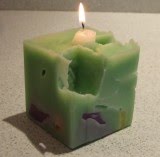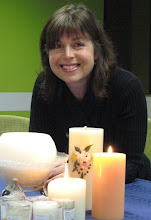
Daily emails ask simple questions that will seem obvious once you get started. I thought it would be a good to idea to keep sharing some of the basic FAQ's here and direct you to some of the information pages that may assist you.
There are also great Free and Short videos on our site, like seeing a mini class.
I do hope all these tips help you make candle making a fun and satisfying craft!
- wick size is about the diameter of the candle and the melt pool it creates, all depends on the flame size
- in moulds, use cotton wick secured at each end
- in containers use pre-waxed wick and tab assemblies with a base to hold it in place
- pillar wax must be strong and firm, and contract from the mould - no lubricant is required for a good wax
- beeswax will struggle to burn well if it has honey or debris still in it - wash and filter well ( see earlier blog post)
- C-soy wax is our choice for containers - it has a low melt point and adheres well to the sides of the glass for a better look
- use a thermometer to drop the C-soy wax to a pour temp of 60C or less for best look
- don't over fragrance - it will impact the stability of the wax and the burn may be smokey and too fast. Be aware that cheap fragrances will require more...(not so cheap!)..we suggest 10-20ml only
- all waxes should be melted in a double saucepan - water has a max. temperature of 100C so you will never have a fire from overheated wax
- always pour with your glass or moulds in a tray (large baking dish, kitty litter tray etc)
- a shiny candle has been poured 'hot' - 80C or over
- icicles and feather palm wax show their patterns best when poured over 90C
- textured candles are poured cold - they begin to set as they hit the mould
- when choosing a pour temperature consider the mould and its heat restrictions
- use continuous wicking where possible to save heaps of time (see blog)
- beeswax can be used successfully in silicon, most 2 part moulds, pyramids and wider columns
- icicle and feather palm are gorgeous in our metal columns and silicon moulds as they can tolerate higher pour temperatures
- always poke at the bottom of the candle as it cools to form channels into the contraction cavity - see info sheet about making palm candles that is relevant to any pillar candle
- when making tea lights part fill them, stand the wick, then fill at leisure
- experiment with your waxes, we love to mix soy with beeswax, container maker with beeswax
+3.jpg)

nice post
ReplyDeleteCandles are made usually from paraffin wax but can also be made from soy wax. The article mentions that because a lot of candles are petroleum based then they have additives which are carcinogenic and create indoor pollution.
ReplyDelete__________________________
Candlemakers
This comment has been removed by the author.
ReplyDeleteNice post. Especially about not over fragrance your candle. Not many people realize that if you are using a very concentrated scent you could actually lock up your scent or get a scent that is not intended as top notes can get overpowered.
ReplyDelete